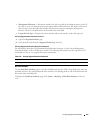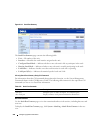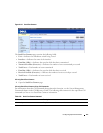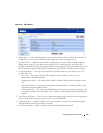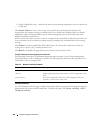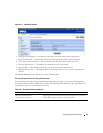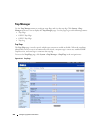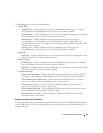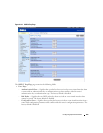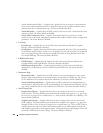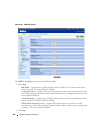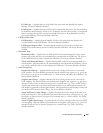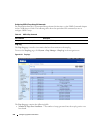
Configuring System Information 263
The Trap Flags page contains the following fields:
•Switch Traps
–
Authentication
— Enable or disable activation of authentication failure traps by selecting the
corresponding line on the pull-down entry field. The factory default is enabled.
–
Link Up/Down
— Enable or disable activation of link status traps by selecting the corresponding
line on the pull-down entry field. The factory default is enabled.
–
Multiple Users
— Enable or disable activation of multiple user traps by selecting the
corresponding line on the pull-down entry field. The factory default is enabled. This trap is
triggered when the same user ID is logged into the switch more than once at the same time (either
via telnet or the serial port).
–
Spanning Tree
— Enable or disable activation of spanning tree traps by selecting the
corresponding line on the pull-down entry field. The factory default is enabled.
• QOS Traps
–
ACL Traps
— Enable or disable activation of ACL traps by selecting the corresponding line on the
pull-down entry field. The factory default is enabled.
•Multicast Traps
–
DVMRP Traps
— Enable or disable activation of DVMRP traps by selecting the corresponding
line on the pull-down entry field. The factory default is disabled.
–
PIM Traps
— Enable or disable activation of PIM traps by selecting the corresponding line on the
pull-down entry field. The factory default is disabled.
• Captive Portal Traps
–
Captive Portal Trap Mode
— Displays the captive portal trap mode status. Enable or disable by
selecting the corresponding line on the pull-down entry field. The factory default is disabled.
–
Client Authentication Failure Traps
— When enabled, the SNMP agent sends a trap when a
client unsuccessfully attempts to authenticate with a captive portal.
–
Client Connection Traps
— When enabled, the SNMP agent sends a trap when a client
authenticates with and connects to a captive portal.
–
Client Database Full Traps
— When enabled, the SNMP agent sends a trap each time an entry
cannot be added to the client database because it is full.
–
Client Disconnection Traps
— When enabled, the SNMP agent sends a trap when a client
disconnects from a captive portal.
Configure Trap Flags Using CLI Commands
For information about the CLI commands that perform this function, see the
SNMP Commands
chapter
in the
CLI Reference Guide
. The following table summarizes the equivalent CLI commands you use to
configure trap flags.



